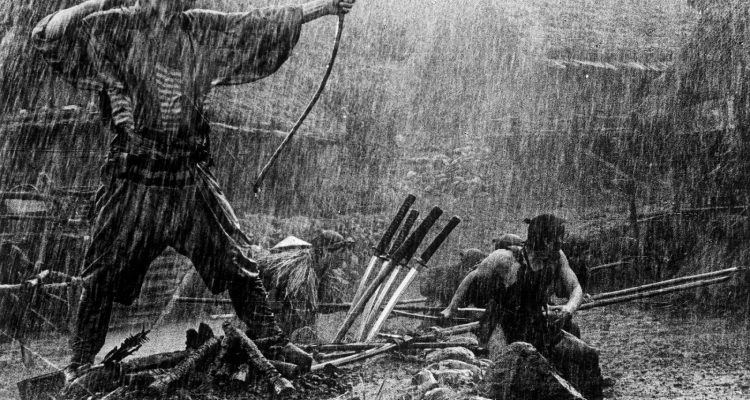There’s a good chance that if you read this site regularly, you don’t need me to sell you on the virtues of “Seven Samurai,” the film that many consider to be Akira Kurosawa’s finest accomplishment. The obvious bullet points are that Kurosawa’s 1954 epic is a master class in visual storytelling, mise-en-scene and yes, pacing and action. The director once said that “each fragment of imagery is a piece of art in itself,” and when you sit down to watch “Seven Samurai” for the first time, you can really see what he meant.
Kurosawa’s quote — and his influence on action filmmaking in general, really, which can be seen in everything from Sergio Leone’s ‘Dollars’ trilogy to “Star Wars” and even this year’s T.V. procedural “The Night Of” — is a curious thing to mull over when you consider how generally incoherent most action movies these days are. Whereas Kurosawa displayed patience and intuition in framing his battle scenes, the blockbusters of today tend to favor frenetic editing and a general air of sensory overload in favor of anything that might potentially reap legitimate emotional dividends. It’s impossible to know how many civilian casualties there must have been at the now-notorious end of Zack Snyder’s “Man of Steel,” which is just one in a long line of modern action films where collateral damage often feels devoid of weight, if it even exists at all. On the flip side, when a character dies in an Akira Kurosawa film, you can feel it in your bones.
Kurosawa buffs will want to check out this new video essay, courtesy of Channel Criswell, that examines the looming shadow of influence that Kurosawa has cast over today’s action pictures. Several interesting points of comparison are drawn: whereas a lot of today’s superhero flicks tend to fetishize their heroes, filming them in uber-sexy slow-mo as they dispatch with dozens of faceless bad guys, Kurosawa in “Seven Samurai” remains stubbornly focused on the aftermath of violence. Those who’ve seen the film will surely remember the first on-screen death: a bandit stumbling out of a small hut and falling to his knees, the camera capturing his pathetic final moments in a lingering and unnerving fashion. By keeping the death off-camera and forcing us to focus on the consequence of the violence — an element too often left out of today’s slam-bang epics — Kurosawa is obliging us, the viewer, to reckon with the weight of what we’ve just witness.
There are other interesting nuggets of trivia here, such as Kurosawa’s reputed tendency to literally map out the geography of his shooting locations (so as to have a more finely attuned sense of spatial topography). Indeed, when the big village melee arrives near the end of “Seven Samurai,” the audience has become intimately acquainted with the village’s layout, adding to its emotional heft. I would argue that it’s perhaps a little unfair to weigh Kurosawa against the Michael Bays and Zack Snyders of the world — no amount of foresight could have predicted that Kurosawa would hold some degree of creative influence over the man who directed “Transformers: Revenge of the Fallen.” Still, the video makes a number of interesting points, some of which may serve to highlight the differences that exist between the original “Seven Samurai” and Antoine Fuqua’s recent, more action-charged and souped-up “Magnificent Seven” remake. For now, check out the essay below.

